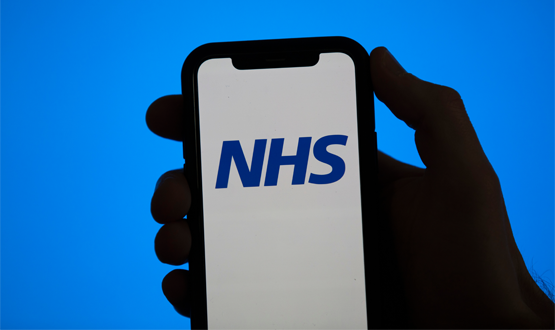Target watch festive special
- 30 December 2013

In opposition, Conservative politicians got a good deal of political mileage out of promising to end the “top down reorganisation” of the NHS and to “scrap centrally imposed targets.”
Government, however, imposes its own kind of reality. And so, in the wake of a reorganisation so big that the chief executive of the NHS said it was “so big you can see it from space”, targets are back in fashion.
They’re certainly the new black in NHS IT. Health secretary Jeremy Hunt kicked off 2013 with the target to trump all targets – a ‘paperless’ NHS by 2018.
And NHS England followed up with a slew of more detailed demands, even before it officially started work in April. After starting with a bang, though, the year is ending on something of a whimper, with many of the major innovations promised unlikely to go-live before 2014.
Paperless sticks and carrots
When Hunt made his ‘paperless’ speech to the right-wing think-tank Policy Exchange in January, he set out a tight timetable for getting “electronic records and communications” into the health service. This started with a 12-month deadline for hospitals to computerise their records “in such a way that they can be shared."
NHS England’s director of patients and information, Tim Kelsey, expanded on this when he spoke at the Cambridge Health Network in February.
He said plans were being drawn up that would include “severe” financial penalties, including loss of contracts, for trusts that failed to make a start by April next year and then hit the 2015 deadline.
On a less punative note, Hunt managed to find some cash for his vision in May, after which NHS England took charge of what became the ‘Safer Hospitals, Safer Wards: Technology Fund’. It promised that an information strategy would be out in June to make sure the money was spent effectively.
The commissioning board got close enough to score a “hit” in Target watch terms as the ‘Safer Hospitals Safer Wards: achieving an integrated digital care record’ guidance was published on 1 July.
This made no mention of penalties for trusts; focusing instead on how to apply to the tech fund, which at this point was worth £260m and destined for NHS Number, e-prescribing, scheduling and information sharing projects.
After considerable delay, caused by the Treasury demanding better value for money on the bids submitted, trusts were informed if they had winning projects in December.
Full details have yet to emerge, as Hunt is due to announce them in the New Year. But the initial impression is that the approved projects lack the focus outlined in the summer and may not be a trust’s priority project. In addition, the process has clearly left a lot of trusts disappointed.
April 2014 is now the date to watch to find out whether trusts will manage to spend the £90m of tech fund money that has to be spent before the end of the financial year effectively. Or, indeed, whether they just manage to spend it before it finds its way back to Treasury.
Even so, £50m of tech fund money has been held over for further rounds. So, overall, the first round of the tech fund looks like a partial hit; that may yet bounce off the cork.
Meantime, NHS England’s plan to release a full technology strategy in December entitled ‘Unleashing the power of people’ has now been pushed back to March, when the Informatics Services Commissioning Group will also publish a national strategy.
Those who fail to learn the lessons of history…
The push for hospitals to adopt electronic patient records has become entwined with another bit of NHS England proposing to extract a hugely expanded hospital dataset from April 2014 and, eventually, to combine it with other data to create the new care.data service.
A consultation was released in July, which said hospitals would need EPRs to meet the new Hospital Episode Statistics requirements. But even at the time, chief data officer Geraint Lewis acknowledged that only a small minority of trusts would have the systems in place to provide the data.
A number of workshops are now being held through to February, with a roadmap for roll-out across the country to follow. However, if the April deadline was going to be met, clear guidance on what is expected from trusts would have to have been released by now.
Meantime, the progress of the wider care.data programme has become tortuous. The commissioning board seems to have failed to study the problems that the National Programme for IT ran into when it put forward plans for a national database of patient records that would enable information to be shared more widely a decade ago.
And having failed to study history, it is now painfully repeating the experience of trying to get the Summary Care Record in place.
Initially, NHS England said that it would start extracting GP data this year, with its business plan, released in April, setting a target of 75% of GPs proving a full extract by September 2013.
However, GPs did not go along quietly with the plans, and instead kicked up an almighty fuss; focusing on their legal obligation under the Data Protection Act to properly inform patients if their identifiable data is leaving the practice.
With many advocating a mass opt-out of the scheme, NHS England was forced to back-track. It announced a major publicity programme, including a £1m leaflet drop to all homes, early next year.
At the press conference announcing this, the proponents of care.data proclaimed with straight faces that there has been “no delay” to the programme. But Target watch is calling their bluff and putting this down as a “miss” for 2013.
Platform heels
Back in the happy days of opposition, the Conservatives also spent a lot of time promising NHS patients an “information revolution.” Like most revolutions, though, the information revolution has hit set-backs as people have tried to turn its ideals into reality – or, in this case, contracts, websites, and other digital services.
For example, as NHS England started work, it promised that it would sweep away most of the health service’s existing digital offerings, and create a whole new integrated customer services platform as a new “digital front door” for the NHS.
The platform – also dubbed the “daughter of NHS Choices” – is supposed to save the NHS £1 billion by getting patients more involved in self-care and self-booking. Unfortunately, although it has undergone a couple of name changes this year, it has yet to open for business.
The only tangible addition to NHS Choices has been the addition of GP performance data, previously scattered across the web, which happened this month. Lots of exciting, new additions to what is now called the ‘health and social care digital service’ are now promised for January.
So watch out for those, but in the meantime, try not to need any of the NHS’ existing digital services, such as NHS Direct, which is due to close next year following its involvement in the NHS 111 debacle, or NHS 111, which was supposed to be rolled out across the country by April this year.
This milestone is now slated for April next year, so Target watch is definitely recording that as a “miss.” The British Medical Association is harsher, and describes NHS 111 as a totemic “failure of modern government”.
Call 311 – in pilot areas only
Another idea that has gone rather quiet is bringing the US’ 311 service to the UK in the form of Care Connect.
This multi-channel patient feedback service went live in 18 trusts in August, is meant to be live in all trusts by February 2014, and is then supposed to be extended to GPs and local authorities. EHI’s attempts to get an update on the programme have so far gone unanswered; so the current state of this project is a bit of a mystery.
The hidden programming powers of clinicians were also due to be unleashed this year. Unfortunately, Kelsey’s exciting claim that 50,000 clinicians would learn to code via the Code4Health programme have, so far, come to nothing.
There are strong rumours that Code4Health – which was also going to teach patients to make health apps – has been axed; but NHS England will only say that it is reviewing its options and will make an announcement in the New Year.
While they are waiting for this announcement, clinicians and patients will have to make do with using the NHS’ own “airline style booking service”, Choose and Book.
The commissioning board just managed to meet this month’s deadline for extending the Choose and Book contract with Atos, to tide it over until the new NHS e-referrals service goes live towards the end of next year.
Again, the last minute nature of the deal was apparently down to hold-ups in Treasury, which seems to be holding the purse strings tight, but not holding enough loosening meetings.
Despite its unpopularity amongst a large number of clinicians, the system is still used to book half of all outpatient appointments in England and leaving the contract extension until the very last minute shows a worrying capacity to play politics with essential services.
Let’s do it all again next year!
So, it’s been a year of highs and lows and plenty of ‘business as usual’ for NHS IT. With a tumble of new and old targets looming early next year, rest assured that EHI Target watch will stay in the case in 2014.




